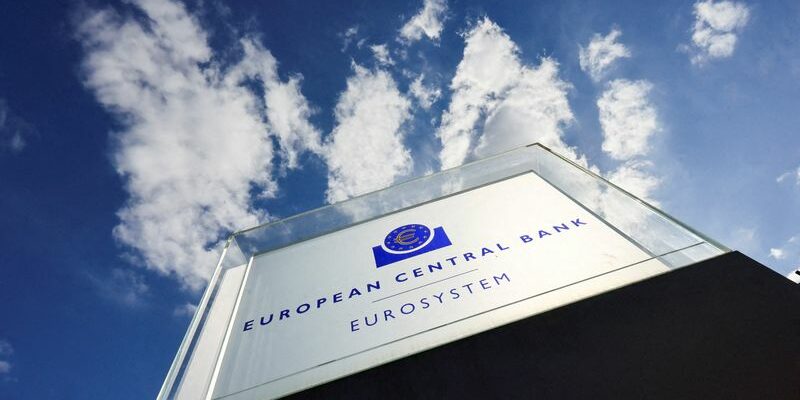by Francesco Canepa and Balazs Koranyi
FRANKFURT (Reuters) – The European Central Bank (ECB) decided on Thursday, as expected, to keep its key rates at their current levels and stressed that, even if inflation slowed more quickly than expected, now is the time to ease its policy hadn’t come yet.
After having underestimated inflationary pressures two years ago, the central bank is hesitant to declare victory in its fight to control price dynamics.
The ECB’s deposit rate thus remained at 4.0% on Thursday, its highest level since the creation of the euro in 1999. It reached this threshold in September 2023 after ten consecutive increases.
The ECB, however, slightly modified its message to take into account the expected continuation of the slowdown in inflation over the past year and a half and its new, lower economic projections.
“We are making good progress towards our inflation target and we are therefore more confident, but we are not confident enough,” declared Christine Lagarde, the president of the institution, during the press conference in Frankfurt which followed the monetary policy decision of the central bank.
“We will know a lot more in June,” she added, noting that there is broad consensus on this point among central bank officials.
On the markets, European bond yields and the euro fell after the ECB’s announcements, while the stock markets were in the green.
In its new quarterly economic projections, the ECB reduced its inflation forecast for this year, from 2.7% to 2.3%. This suggests that inflation could approach the ECB’s 2% target before the end of this year, and not in 2025 as it initially predicted.
In the central bank’s statement, however, its officials stressed that although most measures of underlying inflation were easing, domestic price pressures remained high, largely due to strong growth in wages.
After seeking to dissuade investors from betting on a rate cut at the start of spring, the ECB refrained from making any promises on Thursday.
Sources have been telling Reuters for months that the central bank is unlikely to cut borrowing costs before its June 6 meeting because crucial wage data won’t be available until May.
This means in principle that we will have to wait until the April 11 meeting for the ECB to explicitly open the door to what its chief economist, Philip Lane, has indicated is likely to be the date of the bank’s first key rate cut in the current cycle.
Investors have forecast three or four rate cuts this year, which would bring the ECB deposit rate down to 3.25% or 3.0%.
DECLINE IN INFLATION AND GROWTH
Inflation in the euro zone has been falling for almost 18 months and stood at 2.6% in February year-on-year.
This slowdown is partly the result of a sharp drop in fuel prices, which soared following Russia’s invasion of Ukraine. We also owe the slowdown in prices to the sharp increase in borrowing costs, the pace of which is unprecedented in the history of the euro zone, which has led to a scarcity of credit and a drop in demand.
Core inflation, which excludes volatile food and fuel prices, however, remains above 3%, while the services price index, which is closely linked to wage growth, has increased by nearly by 4% last month.
The tightening of monetary policy has had an impact on economic growth, which has stagnated and is expected to remain weak.
The ECB now expects eurozone GDP to rise by 0.6% this year, compared with a 0.8% rise reported in December.
(Written by Claude Chendjou, edited by Blandine Hénault)
Copyright © 2024 Thomson Reuters
